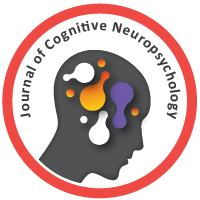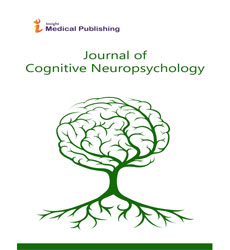Misorientation in Delirium: A Case Report in Psychiatry
Bardia Ghaderi Yazdi*1, Mohammad Arbabi2
1Department of associate professor of Psychiatry, department of Psychiatry, Psychosomatic Medicine research center, Tehran University of Medical sciences, Iran
2Department of Neurology resident at Tehran University of Medical Sciences, Iran
- *Corresponding Author:
- Bardia Ghaderi Yazdi
Department of associate professor of Psychiatry, department of Psychiatry, Psychosomatic Medicine research center, Tehran University of Medical sciences, Iran
Tel: 989353574680
E-mail: bardiyaghaderi@gmail.com, bardiia1990@gmail.com
Received Date: August 09, 2021; Accepted Date: November 15, 2021; Published Date: November 25, 2021
Citation: Yazdi G B, Arbabi M (2021) Misorientation in Delirium: A Case Report in Psychiatry, J Cogn Neuropsychol, Vol:5 No:6.
Abstract
Delirium is a neurocognitive disorder characterized by abnormal features in consciousness and thinking, which makes it difficult to rule out other differential diagnoses. Delirium is distressful for patient, their family and health care providers. Therefor better understanding of this disorder is an asset. In this case report we present a person with experience of disturbance in perception of horizontal and vertical dimensions and further we introduce this phenomenon as sign of delirium which we name it in this article as “misorientation”. In addition, this report discusses neuroimmunology and neuroanatomy associated with time and space orientation and their impairment. We propose hypothesis regarding disorientation.
Introduction
The Delirium is a common neurocognitive disorder that is characterized by a wide range of individual based clinical features ,and most prominent ones are abnormality in attention, and level of consciousness [1-4]. Delirium have three major subtypes called hypoactive, hyperactive and mixed delirium [5,6]. The main differential diagnoses are depression, dementia and various medical diseases[7].
Because many patients recall the experience, qualitative studies conducted to determine patient feelings. Although the patients experience different emotions the most prominent ones were fear and anger. Perceptual disturbances and communication problems were reported as well. It has been called an undesirable experience for patients, their family and the care givers [3,6,8-13]. Some patients experienced as a “sudden change of reality” [11] and “incomprehensible experience” [12], many others described it a dream like experience [6,8,9,12,13].
Regarding the Fifth Diagnostic and statistical manual of mental disorders (DSM-5), delirium is most notably known by having four cores: 1. Disturbance in attention and awareness, 2. Disturbance in cognition, 3. Development of disturbances over a short period of time, and 4. Fluctuation of the symptoms. There are evidence that delirium is a consequence of a medical condition” [14] and associates with several risk factors [15]. It is more common in elderlies and admission in intensive medical departments, palliative care unit, post-operative surgery, emergency departments, neurologic wards and internal medicine wards [2,3,15-17], and stands as an important source of prolonging hospital stays and morbidity [1-3,6].
Diagnosing delirium is challenging for physicians and nurses[18-20],especially when the features are not as typical as we expected [21] and in patients with severe illnesses [22] [21]. Therefore clinicians need to find a more efficient diagnostic method [18,19,23], and learn the delirium the less common symptoms as well.
Case
In a survey about delirium lived experience, we have interviewed a patient that has been diagnosed with delirium. Surgery ward nursing staff assessed her and found delirium manifestations like acute disturbances in cognition, attention and awareness. We identified delirium by ICU-CAM questionnaire. The patient was a seventy years old woman with previous diagnosis of colorectal cancer and underwent total colectomy. In post-operative she had experienced perceptual disturbances and disturbing feelings. One major theme of her experience was a diversion in vertical and horizontal dimensions. To explore the original experience of the patients, an in-depth semi structured interview has been done. The interview was recorded and inform consent was taken, and we assured her about confidentiality. She said:
“Thanks to god. I feel better right now, but the first night after the operation I saw everything differently. I could see myself sleeping in the bed but it is like I’m hung while television and refrigerator are middle of the room. I took the bed fence with my hands, and was terrified falling. I begged my daughter to take me down. She kept saying I am down. I was afraid of it happening again. When visitors came beside my bed they became equal with me but I frightened and I prayed to god to take away this situation. When they left I changed my spot. After I came back to the bed again, the weird experience starts happening again. I saw my daughter walking on television and refrigerator, while she said everything is fine. She gave me water, when I took the water suddenly all of it felt on me, like I really was hung even though I reclined. I can see right now that everything was different that night.”
Discussion
As mentioned in the interview, the patient had experienced a diversion in vertical and horizontal dimension that we name “misorientation”. In the literature review and in medical semiology we have thought that this a sign has not yet defined and it could be as a manifestation in sensorium and cognition of patients with delirium.
As we said earlier delirium has diverse and individual clinical features and have different etiologies [1-4] one of clinical features of delirium is disorientation which is patient missed exact orientation to time, place and person [23]. Different studies has showed that neurons of right hippocampus and related brain region are responsible for spatial coding [24-26] and orientation is related to following three brain regions: precuneus, inferior parietal, and medial frontal cortex [27]. So, it seems that orientation to person, place and time is consequence of a brain functional system [24-27]. However, it seems the neuro inflammatory processes cause disruption in brain blood barrier and is responsible for delirium state [28]. Delirium acknowledged as a dream state [6,8,29] and we think it will be great to find similar experience in dream.
As we found in the interview the patient had experience a diversion in vertical and horizontal dimensions that we identified as “misorientation”. It seems that the pathology behind disorientation is in parietal lobe in connecting with other parts of the brain [27] , so more imaging studies may foster understanding structural and functional explanation of misorientation. Misorientation is a symptom-related to orientation and the patient know where she is, but she misunderstands her surroundings. Although, this sign is similar to disorientation but they are not the same. This phenomenon should be defined precisely, that is why we introduced misorientation here to delineate it. Hopefully, it seems this finding should be considered as a symptom in understanding and diagnosing delirium.
Clinical implication
Understanding the patients’ symptoms improves their care and provides precious recourse for their safety besides, this new sign could be an aid for overcoming difficulties that psychiatrist and neurologist face using DSM -V criteria in diagnosis and management of delirium.
References
- Gofton, T.E., Delirium: a review. Can J Neurol Sci 38(05): p. 673-680.
- Peritogiannis, V., et al., Recent insights on prevalence and corelations of hypoactive delirium. Behavioural neurology, 2015. 2015.
- Hosie, A., et al., Delirium prevalence, incidence, and implications for screening in specialist palliative care inpatient settings: a systematic review. Palliative medicine, 2013. 27(6): p. 486-498.
- Maldonado, J.R., Neuropathogenesis of delirium: review of current etiologic theories and common pathways. Am J Geriatr Psychiatry, 2013. 21(12): p. 1190-1222.
- , P.J., et al., Delirium and Its Motoric Subtypes: A Study of 614 Critically Ill Patients. J Am Geriatr Soc, 2006. 54(3): p. 479-484.
- Partridge, J.S., et al., The delirium experience: what is the effect on patients, relatives and staff and what can be done to modify this? Int J Geriatr Psychiatry, 2013. 28(8): p. 804-812.
- Johnson, J., R. Sims, and G. Gottlieb, Differential Diagnosis of Dementia, Delirium and Depression. Drugs & Aging, 1994. 5(6): p. 431-445.
- O'Malley, G., et al., The delirium experience: a review. J Psychosom Res, 2008. 65(3): p. 223-228.
- Bélanger, L. and F. Ducharme, Patients' and nurses' experiences of delirium: a review of qualitative studies. Nursing in critical care, 2011. 16(6): p. 303-315.
- Breitbart, W., C. Gibson, and A. Tremblay, The delirium experience: delirium recall and delirium-related distress in hospitalized patients with cancer, their spouses/caregivers, and their nurses. Psychosomatics, 2002. 43(3): p. 183-194.
- Duppils, G.S. and K. Wikblad, Patients' experiences of being delirious. J Clin Nurs, 2007. 16(5): p. 810-818.
- Fuller, V., Delirium recall–an integrative review. J Clin Nurs, 2016. 25(11-12): p. 1515-1527.
- Grover, S., A. Ghosh, and D. Ghormode, Experience in delirium: is it distressing? J Neuropsychiatry Clin Neurosci, 2015. 27(2): p. 139-146.
- Association, A.P., Diagnostic and statistical manual of mental disorders (DSM-5®). 2013: American Psychiatric Pub.
- Zaal, I.J., et al., A systematic review of risk factors for delirium in the ICU. Critical care medicine, 2015. 43(1): p. 40-47.
- Bruce, A.J., et al., The incidence of delirium associated with orthopedic surgery: a meta-analytic review. International Psychogeriatrics, 2007. 19(02): p. 197-214.
- Razak, H.R.B.A. and W.Y.A. Yung, Postoperative delirium in patients undergoing total joint arthroplasty: a systematic review. J Arthroplasty, 2015. 30(8): p. 1414-1417.
- Lawlor, P.G. and S.H. Bush, Delirium diagnosis, screening and management. Current Opinion in Supportive and Palliative Care, 2014. 8(3): p. 286-295.
- Barron, E.A. and J. Holmes, Delirium within the emergency care setting, occurrence and detection: a systematic review. Emergency Medicine Journal, 2012.
- Boot, R., Delirium: A review of the nurses role in the intensive care unit. Intensive and Critical Care Nursing, 2012. 28(3): p. 185-189.
- Gower, L.E.J., M.K. Gatewood, and C.S. Kang, Emergency Department Management of Delirium in the Elderly. West J Emerg Med, 2012. 13(2): p. 194-201.
- Leonard, M.M., et al., Delirium Diagnostic and Classification Challenges in Palliative Care: Subsyndromal Delirium, Comorbid Delirium-Dementia, and Psychomotor Subtypes. J Pain Symptom Manage, 2014. 48(2): p. 199-214.
- Bergeron, N., et al., Intensive Care Delirium Screening Checklist: evaluation of a new screening tool. Intensive care medicine, 2001. 27(5): p. 859-864.
- Kay, K., et al., A hippocampal network for spatial coding during immobility and sleep. Nature, 2016. 531(7593): p. 185-190.
- Barry, C. and N. Burgess, Neural mechanisms of self-location. Current Biology, 2014. 24(8): p. R330-R339.
- Maguire, E.A., et al., Knowing where and getting there: a human navigation network. Science, 1998. 280(5365): p. 921-924.
- Peer, M., et al., Brain system for mental orientation in space, time, and person. Proceedings of the National Academy of Sciences, 2015. 112(35): p. 11072-11077.
- Cerejeira, J., et al., The neuroinflammatory hypothesis of delirium. Acta Neuropathol, 2010. 119(6): p. 737-754.
- O'Keeffe, S.T. and Á.N. Chonchubhair, Postoperative delirium in the elderly. Br J Anaesth, 1994. 73(5): p. 673-687.

Open Access Journals
- Aquaculture & Veterinary Science
- Chemistry & Chemical Sciences
- Clinical Sciences
- Engineering
- General Science
- Genetics & Molecular Biology
- Health Care & Nursing
- Immunology & Microbiology
- Materials Science
- Mathematics & Physics
- Medical Sciences
- Neurology & Psychiatry
- Oncology & Cancer Science
- Pharmaceutical Sciences
